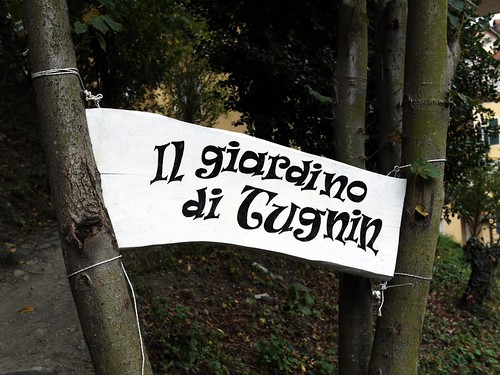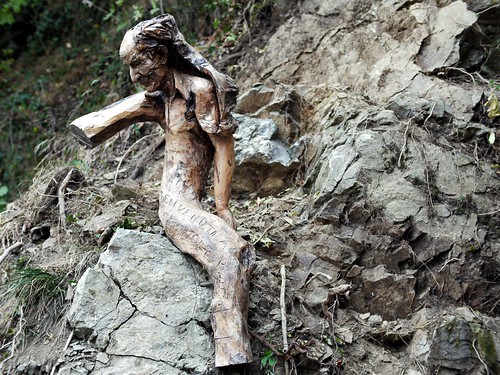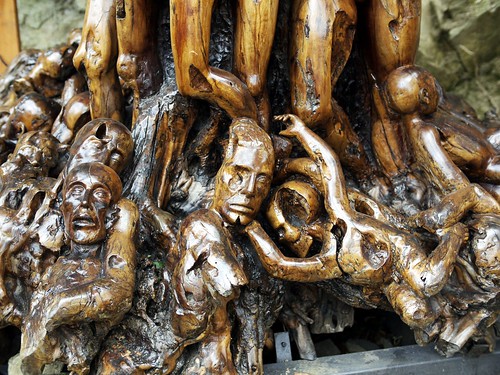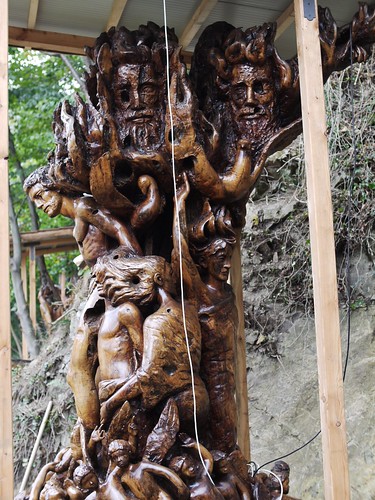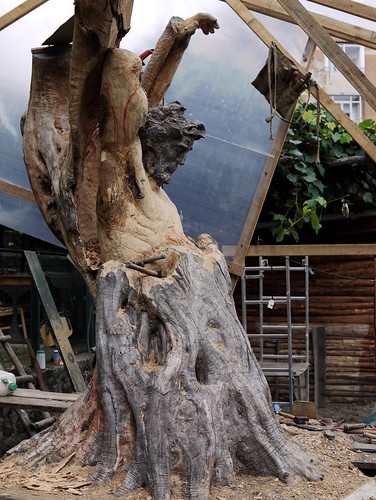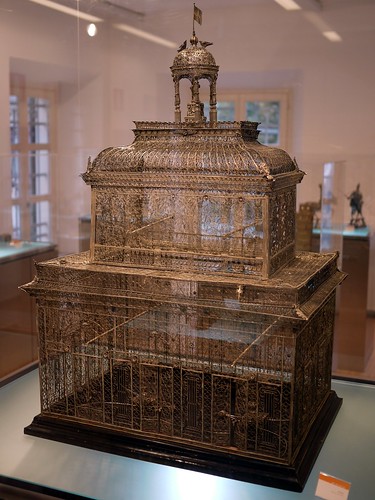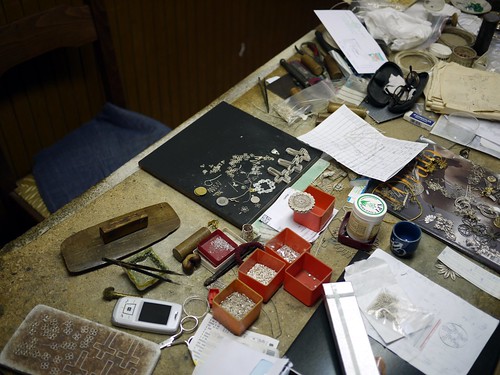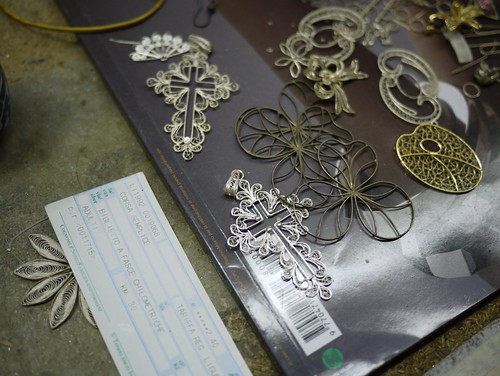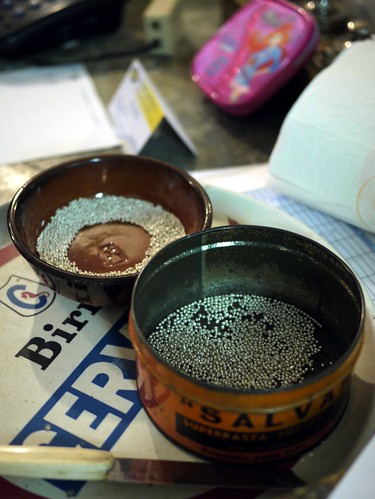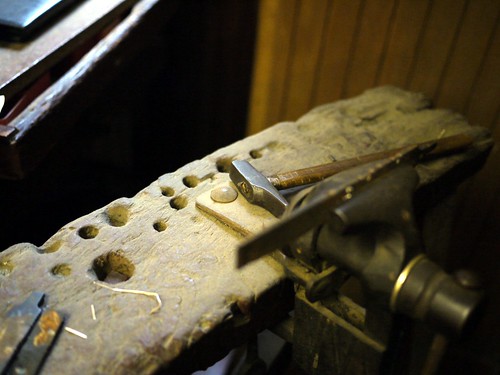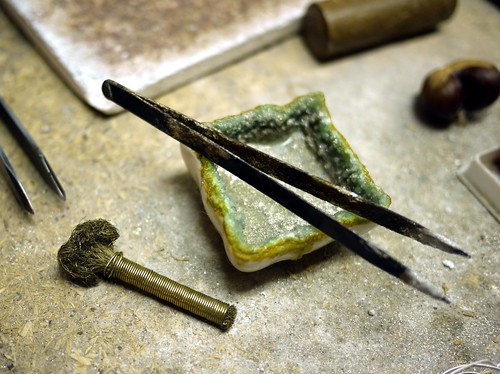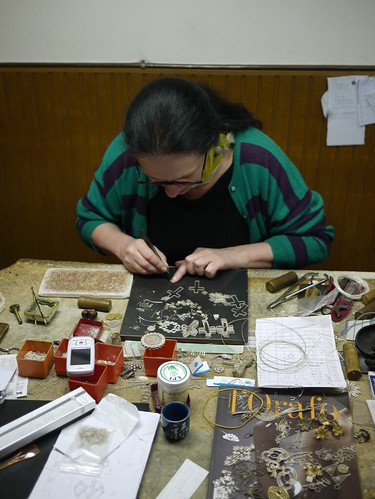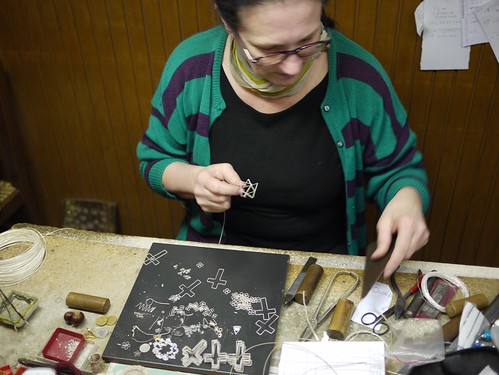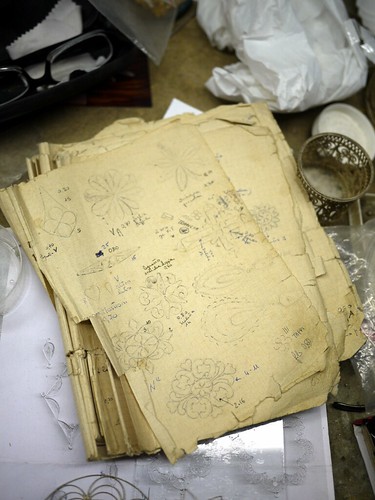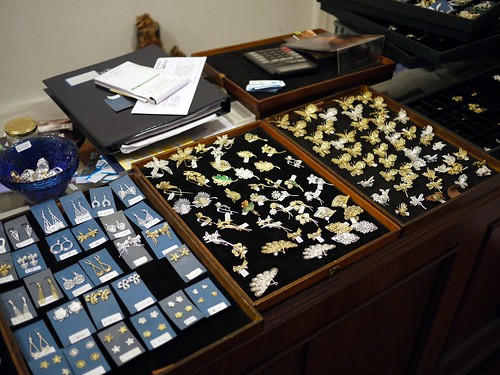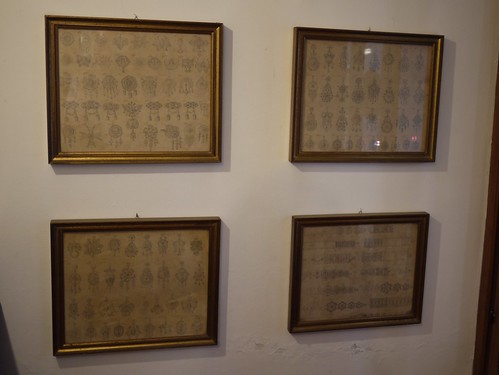I've just got back from a visit to Italy, to one of my favourite towns there, Genova, the mediaeval city clinging to the cliffs which plunge from the foothills of the alps to the sea. Just to the north of Genova, is the tiny town of Campo Ligure, which is reckoned to be the home of filigree. By this, I mean true filigree, not just "anything made from fine wires" which the word seems to have come to mean. As part of my visit to see my dear friend, János, we also took in some of the other amazing things the little town has to offer.
First up was the marvellous Giardino Tugnin, which is a set of enormous sculptures by a local butcher turned sculptor and which are carved directly from the stumps of hardwood trees, especially olive trees.
His work is a bizarre and wonderful mixture of mythology, Dante's Divine Comedy and portraits of local people:
After this, we went to the Filigree museum. Campo Ligure is supposed to have been the place where filigree was first made and a study has been done which shows that all filigree work around the world can be traced to this town.
Now, I am not a big fan of filigree - though visiting the museum and the workshop later did give me some ideas of things I might now try - but it was interesting to see a collection of it. I've only posted a few pictures here but there are more. Clicking on one of the pictures will take you to Flickr to see the rest.
"Filigree" the word comes from the Italian words for "wire" and "seed" and it is traditionally made from twisted wires which are then flattened.
For me, the most impressive pieces are the ones which combine filigree with other techniques, such as this plique-a-jour enamel goblet. The museum is very modern, bright and well-organised, with the different styles divided up into countries and regions.
Some of the work is nothing short of vulgar!
And some is of very great refinement
After visiting the museum, we went to visit Franca Bonegra, one of the last remaining filigranists in the town. She was trained as a child and can remember her whole family working in the workshop at the back of her tiny shop from which she still works and sells.
Franca's bench.
Partially-completed works.
Various elements waiting to be soldered. These are the basic elements into which the filigree scrolls are placed.
Decorative granules.
Wire drawbench and forming bench.
The special solder and flux mixture which is used to bind the elements together. This solder is a rather low-grade and therefore low-melting point solder. It is powdered and then mixed with borax and "aqua verde". None of us were quite sure what "aqua verde" actually is. Any suggestions would be welcomed.
Franca making the little scrolls to go into the "scaffold".
Soldering by moving the board under the flame, not the flame over the board, as most jewellers do. TO the left is a bottle of "aqua verde", looking horribly like "Mountain Dew"!
The filligranist makes the wires using an ancient and non-standard steel guide which her grandfather used. All his patterns are marked out in measurements taken from this guide.
Finished filigree works for sale and export in the shop.
Traditional designs in the shop.
It is really sad that this skill is being lost. Franca had taught her son to make this sort of work but he has moved to Genova to manage a food shop there. It pays more.

